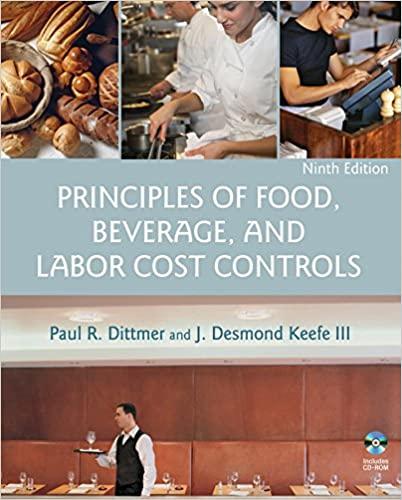Answered step by step
Verified Expert Solution
Question
1 Approved Answer
This is a Managerial Accounting II question. I need the whole thing answered as soon as possible. Willing to give extra credit or divide the
This is a Managerial Accounting II question. I need the whole thing answered as soon as possible. Willing to give extra credit or divide the question if needed. But this question need to be answered as soon possible!! 

ACCT73010 Assignment #4 - 40 marks- Chapter 15 - Joint Cost Allocation Due: November 29th Must be completed in Excel Groups of 3 are allowed. Question #1 (35 Marks) Alternative methods of joint costs allocation, product-mix decision. Pacific Lumber processes lumber products for sale to lumber wholesalers. Its most popular line is oak products. Oak tree growers sell Pacific Lumber whole trees. These trees are jointly processed up to the split off point at which raw select oak, raw white oak, and raw knotty oak become separable products. Each of these raw products is then separately further processed by Pacific Lumber into finished products (select oak, white oak, and knotty oak) that are sold to lumber wholesalers. Data for August 2019 are: a. Joint processing costs (including cost of oak trees) $300,000 b. Separable product at split off point Raw select oak 30,000 board feet Raw white oak 50,000 board feet Raw knotty oak 20,000 board feet Final product produced Select oak 25,000 board feet at $16 per board foot White oak 40,000 board feet at $9 per board foot Knotty oak 15,000 board feet at $7 per board foot C. Separable processing costs . For select oak $60,000 . For white oak $90,000 For knotty oak $15,000 There is an active market for raw oak products. Selling prices available in August 2019 were raw select oak (58 per board foot), raw white oak (S4 per board foot), and raw knotty oak (53 per board foot). There were no beginning inventories for August 2019, REQUIRED Allocate the joint costs to the three products and calculate the ending inventory values using: (5 Marks for each Method) Collaterale bed REQUIRED Allocate the joint costs to the three products and calculate the ending inventory values using: (5 Marks for each Method) a) Split off at Sales Value Method b) Estimated net realizable value method (NRV) c) Constant Gross Profit method 2) Prepare in good form a Gross Margin Statement for each method. (5 Marks for each method) Ending inventory for August 2019 was select oak (1,000 board feet), white oak (2,000 board feet), and knotty oak (500 board feet). 3) Is Pacific Lumber maximizing its total August 2019 operating income by fully processing each raw oak product into its finished product form? Show computations.( 5 Marks) Question #2 (5 Marks) Sometimes managers might be indifferent about processing a product further because the incremental contribution margin is about the same as the contribution margin without further processing. Discuss an example of one qualitative factor that might influence a decision to process a joint product beyond the split-off point. ACCT73010 Assignment #4 - 40 marks- Chapter 15 - Joint Cost Allocation Due: November 29th Must be completed in Excel Groups of 3 are allowed. Question #1 (35 Marks) Alternative methods of joint costs allocation, product-mix decision. Pacific Lumber processes lumber products for sale to lumber wholesalers. Its most popular line is oak products. Oak tree growers sell Pacific Lumber whole trees. These trees are jointly processed up to the split off point at which raw select oak, raw white oak, and raw knotty oak become separable products. Each of these raw products is then separately further processed by Pacific Lumber into finished products (select oak, white oak, and knotty oak) that are sold to lumber wholesalers. Data for August 2019 are: a. Joint processing costs (including cost of oak trees) $300,000 b. Separable product at split off point Raw select oak 30,000 board feet Raw white oak 50,000 board feet Raw knotty oak 20,000 board feet Final product produced Select oak 25,000 board feet at $16 per board foot White oak 40,000 board feet at $9 per board foot Knotty oak 15,000 board feet at $7 per board foot C. Separable processing costs . For select oak $60,000 . For white oak $90,000 For knotty oak $15,000 There is an active market for raw oak products. Selling prices available in August 2019 were raw select oak (58 per board foot), raw white oak (S4 per board foot), and raw knotty oak (53 per board foot). There were no beginning inventories for August 2019, REQUIRED Allocate the joint costs to the three products and calculate the ending inventory values using: (5 Marks for each Method) Collaterale bed REQUIRED Allocate the joint costs to the three products and calculate the ending inventory values using: (5 Marks for each Method) a) Split off at Sales Value Method b) Estimated net realizable value method (NRV) c) Constant Gross Profit method 2) Prepare in good form a Gross Margin Statement for each method. (5 Marks for each method) Ending inventory for August 2019 was select oak (1,000 board feet), white oak (2,000 board feet), and knotty oak (500 board feet). 3) Is Pacific Lumber maximizing its total August 2019 operating income by fully processing each raw oak product into its finished product form? Show computations.( 5 Marks) Question #2 (5 Marks) Sometimes managers might be indifferent about processing a product further because the incremental contribution margin is about the same as the contribution margin without further processing. Discuss an example of one qualitative factor that might influence a decision to process a joint product beyond the split-off point 

Step by Step Solution
There are 3 Steps involved in it
Step: 1

Get Instant Access to Expert-Tailored Solutions
See step-by-step solutions with expert insights and AI powered tools for academic success
Step: 2

Step: 3

Ace Your Homework with AI
Get the answers you need in no time with our AI-driven, step-by-step assistance
Get Started


